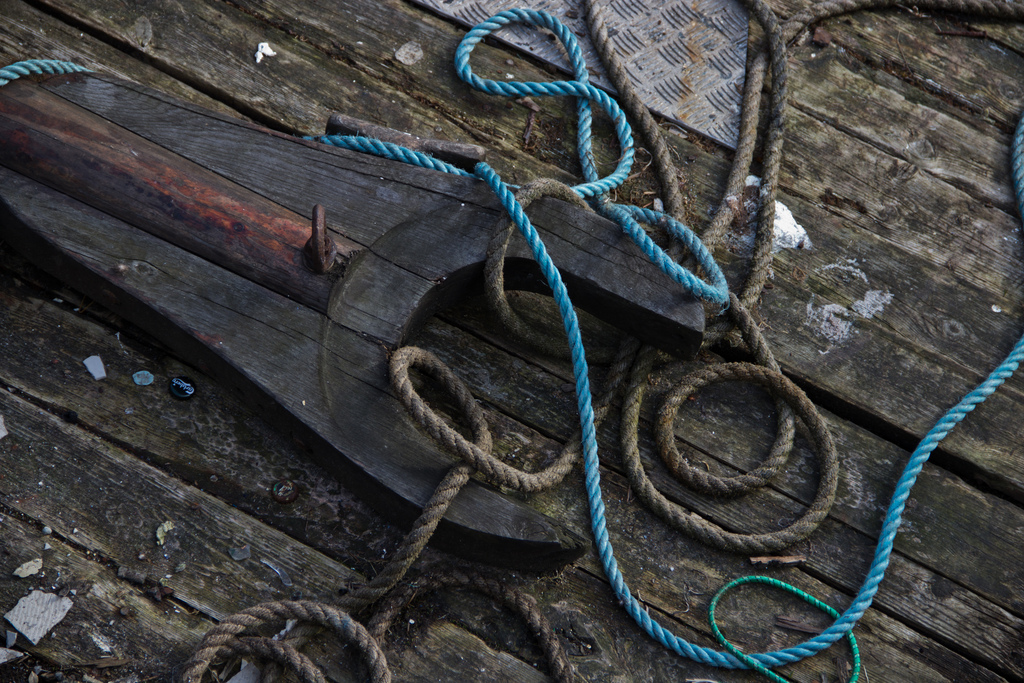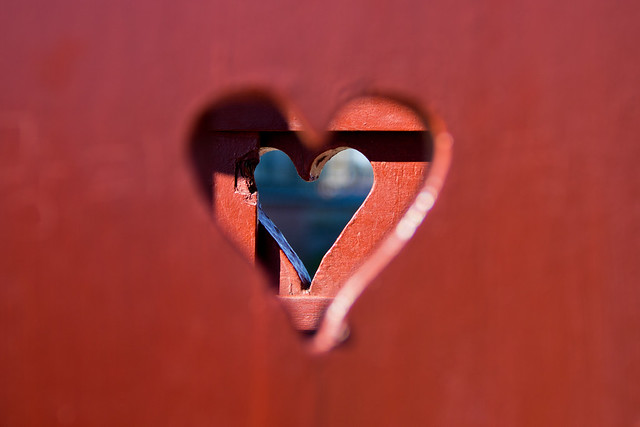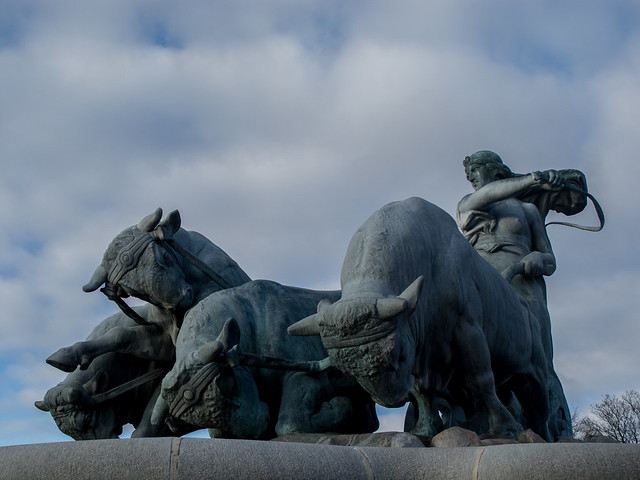The Little Mermaid – Copenhagen’s Tribute To Disappointment

When it comes to tourism, talk of Denmark far too often revolves around what is, perhaps, one of its most unimpressive and disappointing landmarks – the Little Mermaid. This sorrowful lass reclining by the sea is not ugly. And yet, she is not beautiful. In truth, the Little Mermaid is bland. She is a small statue crafted in a style that neither captures the entirety of the female form in vivid detail nor the essence of it through less specific but still compelling lines and curves.
She stands as an example of what happens when you take something mediocre and attempt to force it to greatness. With people, they sometimes excel – rising to the moment and to become something truly spectacular. With statues…well…they just become a disappointment. Something to take a photograph with, for the sake of taking a photograph, before moving on to the discovery of things that are more compelling and engaging.
It also fosters resentment and annoyance. I can think of few other statues that are so disliked by the local population. The only one that comes to mind more prominently is of course the “Freedom” statue of William Wallace, which looks suspiciously like actor Mel Gibson, in Scotland. That statue has been assaulted with a sledge hammer, caged for its own protection (irony aside), had its face shot off with a shotgun, and now resides after careful restoration inside a locked visitor’s center.
While the average Dane’s level of animosity towards the Little Mermaid leans more towards apathy, she has still been the focus of numerous assaults including multiple beheadings, the removal of an arm and a number of unwelcome paint jobs. While, unlike Wallace, she still remains upon her native perch available to the public, she is filled with cement, reinforced, and carefully monitored.
Of course it doesn’t help that the artist’s family who owns the rights to the statue are less benevolent than a pack of hungry hyena. While they’ve never disclosed what they make each year from the Little Mermaid, they are famous for their aggressive defense of royalties and for targeting photographers. Not exactly the type of behavior that fosters belief or support in the Little Mermaid as a national icon. You may have noticed that a photo of the Little Mermaid is missing from this post – well, i’d include a photo of the Mermaid in this post, but, well…I think you’ll understand.
At the end of the day I often wonder, in this city of wonders, of art, of culture, and of history – why do we care about the Little Mermaid and how has she become the crowning attraction tied to H.C. Andersen? Was it just that in a mad scramble to find something tangible that embodied his wonderful stories that a bland statue of a mermaid by the sea was the best that could be found? Or is there some innate beauty or attraction to the Mermaid that most locals and visitors overlook? I doubt it.
It is a crying shame that the Little Mermaid stands as such a disappointing tribute to one of Denmark’s greatest authors and the central figure in one of his most well-loved stories. There surely must be a more fitting tribute that we can invest our energy and excitement in. I for one wish her no ill will, but of the many things to see during a quick visit to Copenhagen – the only reason to visit the Mermaid is for a check-mark on a checklist. What I find makes the whole affair even more unfortunate is that she sits less than a 10-minute walk from the slightly older Gefion Fountain. A glorious tribute to a Norse goddess that has sweeping lines, plays with water elegantly and possess a sense of motion and power that actually merits praise.
The one question that remains is how will the Little Mermaid’s story end this time? Will it be a happy ending? Or will it share echoes of the original fairytale, one full of sadness and unrequited love.



So for The Little Mermaid to cause such disappointment there must be expectations. And where do they come from? She IS called the LITTLE Mermaid. But in a world where biggest and tallest apparently is synonymy with best and impressive and nowadays worship of the perfect body, the statue of The Little Mermaid of cause can be nothing but a disappointment. (The painting of Mona Lisa in Paris of cause isn’t a national symbol but it is small too and can cause the same disappointment but that doesn’t make it less popular either).
The Little Mermaid was never created as a national symbol. The fact that it was vandalized (to get attention), that Eriksen has copyright on photos of it, that it apparently has always been a copy (as it is of bronze and the mold is still existing), and that it has been moved out of Denmark for the Expo 2010 quite underline that fact.
The story behind it is beautiful anyway I think and I don’t see why it´s not more known because maybe it could prevent some of the disappointment. In 1909 brewer Carl Jacobsen (owner of Carlsberg) went to see the ballet “The Little Mermaid” at The Royal Theater. He got so fascinated by the solo dancer Ellen Price, that he let the sculptor Edvard Eriksen perpetuate her as The Little Mermaid. That way he said The Little Mermaid was immortalized in both sculpture, ballet, music and of cause in the fairytale of H.C. Andersen. Why Jacobsen chose Eriksen I don’t know but he was doing several public sculptures at that time. The ballerina was appointed as model for the statue but she didn’t like to be naked in front of Eriksen so the wife of Eriksen had to do that part. So yes, the sculpture is inspired by a thin ballerina and the model was an average Danish woman. The look of the statue is said to be inspired by Henri Chapus sculpture of Joan of Arc (which apparently was a popular sculpture at the Glyptotek at that time). The statue The Little Mermaid was given as a gift to the city of Copenhagen and it was set up in Copenhagen harbor in 1913 (Jacobsen wanted it to be placed in an artificial pool of water in Langelinie, but the sculptor wanted her placed on stones in the water on the shore – that I think was clever as it do make her more mysterious and unreachable).
Identity is both about the represented and the representer. The Tourist Association of Denmark has surely done their part. In the 1930ies they began to tell new stories about Denmark, emphasizing on the liberated and smiling Denmark – a peaceful oasis full of romance and fairytales (as a contrast to the increasingly troubled Europe). Based on a research showing that among foreigners the statue of The Little Mermaid (because of the fairytales of H.C. Andersen) was more popular than the National Museum, the Committee recommended to “tastefully” exploit this interest. So in the following years they began to make references to “The fairy-tale (eventyrlige) Copenhagen of H.C. Andersen” in the tourist brochures. Photos of The Little Mermaid got a more prominent place in the brochures but the statue wasn’t described as a landmark or a symbol of either Copenhagen or Denmark. After the Second World War that changed and the statue became ‘famous for being famous’ and a ‘must-see’ (Wonderful Copenhagen help on that).
So why is the statue still a symbol of Denmark? Well the many times it has been vandalized have given her more publicity, and we all know how it goes with cultural donations form big men (eg. The Operahouse). Also if you see something disappointing you tell other people – but honestly would you come to Denmark and not see The Little Mermaid even though you’ve heard it´s not worth it? –it´s not HER you go there to see. It’s the idea of her. I actually think that because she is small and not impressive that can make people relate to her more personally if they want to.
Our national bird is the mute swan. In 1960 the Ministry of Education decided that the skylark was the national bird of Denmark. That was changed after a TV show in 1984 where the viewers voted for the mute swan. That is to say that it´s just kind of random what becomes the symbol – unless it is made for it of cause – but I think it can always be discussed if it´s what best represent a country. So as you suggest we could come up with another national symbol. The fountain Gefion couldn’t be national symbol as the story behind it is about how Sjælland became the island it is. So it wouldn’t apply for the whole country. Denmark on the other hand is an old fishing country and so a mermaid is more appropriate I think. And well H. C. Andersen has come to represent Denmark, so a figure of one of his fairytales should be adequate. And Denmark is a small country. Copenhagen is cute, has small houses and a fairytalish ambient. Denmark also has a great National Ballet why the ballerina story would fit. We still have monarchy why stories of princesses and princes are not that strange. Of cause the story we like to tell is that we were once Vikings and then the Gefion would better represent that. But the discourse about the Vikings is that they were these violent explorers –but they were also traders and farmers who build their society on trust –something that still today should be a reason for the good welfare system that we have in Denmark. It´s just to say that there are always more (maybe disappointing) stories behind the popular ones. And are we “Vikingish”? –well when we get drunk you could get some associations. But normally most people live a quiet life under the “Jantelov”. And from an economic perspective when you have a success and people travel from far away to see the statue why ruin it and spend a lot of recourses on finding something more suitable which will not be a disappointment? For me to see the only thing would be to create a new Danish national symbol. What should that be? For the future of the statue of The Little Mermaid as it is with discourses – she needs to be kept alive. If they manage to keep telling stories about her (like moving her to Expo) eg. related to sustainability or other hot topics then she could survive. If not, H. C. Andersen has to do the work.
It is clear that it´s not the statue of The Little Mermaid itself that is the attraction – she never promised to be great. That’s why I think she has her right to be what she is – that the world and not least Disney has created other expectations well that’s not her fault. I hope that I have contributed to put the statue in context. There is always a story behind and being curious might help avoiding disappointments.
I wish you all a pleasant stay in Denmark, I think we have a lot more to offer 🙂